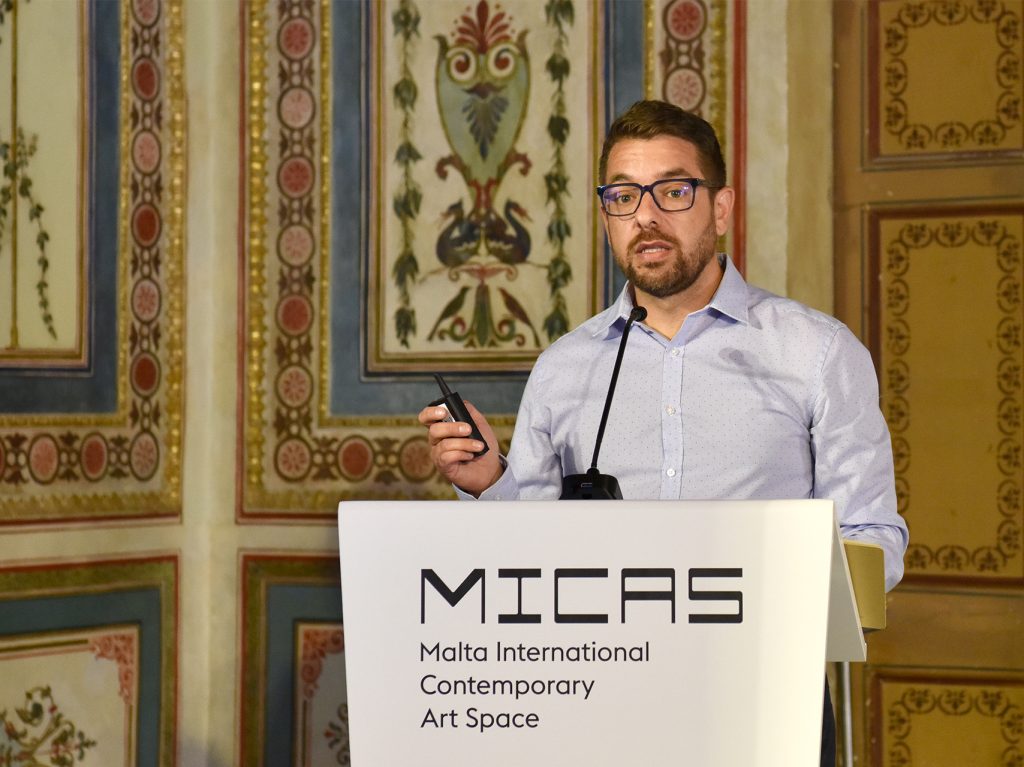
In his presentation to the MICAS conference ‘Connecting with Nature: Placemaking and the Urban Garden’, Dr. Mario Balzan, a senior MCAST lecturer and founder of Ecostack Innovations, asks: who gets to benefit from nature, especially in urban centres with high population density?
The short answer is: not everyone.
Balzan finds this discrimination in scientific findings showing how private gardens and urban trees are four times more effective per unit area in terms of “regulating ecosystem service capacities per unit area” – that is, providing the benefits of nature that regulate the local environment quality. Public gardens, in contrast, tend to be less effective but are most strongly associated with cultural ecosystem services, and like watercourses, garrigue, or beaches are widely enjoyed for recreation, tourism, nature, or for spiritual, heritage, inspirational and aesthetic values.
“If private gardens are more effective than public green spaces… probably, if you are well off, have a degree, have a better paid job, then you probably have more access to nature and its benefits.”
In areas of disadvantage that are not provided with public spaces that offer the benefits of nature, it will often be the unemployed, those with disability or with illness, and those in elementary occupations, who will have reduced access. “This is an important aspect, showing how ‘green’ is not about plants – but a social and economic issue,” Balzan says.
It is a challenge that ties in with MICAS’s green infrastructure project under development: a public garden which, apart from aesthetic value, promotes urban biodiversity and fosters placemaking through connections with nature, physical spaces and contemporary art.
Public spaces in urban centres – Balzan cites his studies of Valletta as an example – lack the crucial aspect of tree cover, so vital in densely populated areas as a source of shade, but more importantly so effective in acting as a carbon sink and to counter the air and noise pollution of these areas. Not only do disadvantaged groups in these areas suffer the absence of high tree cover, but it raises questions as to why space or funding is not first prioritized for such tree planting in areas with a higher demand for such benefits.
In examples of publicly-funded projects, Balzan highlights the use of green walls or green roofs that complement existing green infrastructure, especially in areas with limited open spaces. But his research uncovers a gap in understanding: such ecological box-ticking in Malta tends to address only a narrow range of urban societal challenges.
“In Malta we tend to focus on our natural areas,” referring to rural landscapes, “[the challenges of] drought and heat risks, and biodiversity loss… We might not be seeing cities as areas for nature-based solutions. We should be talking about nature as being multi-functional.”
So what is delaying a nature-based intervention in Malta’s urbanised localities? Balzan believes stakeholders report a huge gap of knowledge about the kind of nature-based solutions that are required, or their costs. “Our institutions have a lack of interdisciplinary knowledge, national and practical guidance, lack of monitoring, and limited space.”
Balzan says it is time to ask the right questions: who are the people who need the benefits of nature the most? Which are the communities that need higher tree cover and air quality improvement, and how can the authorities prioritise these first?
The upgrading of open spaces is one such effective intervention, but Balzan also calls for the introduction of nature-based solutions to new developments and their design, in such a way that nature is also used to address societal challenges. “Spatial analysis can help us understand what we should be focusing on in particular areas, and what is more effective in terms of the green space available and what is mostly in demand by way of the benefits of nature.”
You can watch ‘Connecting with Nature: Placemaking and the Urban Garden’ on the MICAS Facebook feed here.
Share

Operational Programme I – European Structural and Investment Funds 2014-2020 “Fostering a competitive and sustainable economy to meet our challenges”. Project may be part-financed by the European Regional Development Fund Co-financing rate: 80% European Union Funds; 20% National Funds.


Operational Programme I – European Structural and Investment Funds 2014-2020 “Fostering a competitive and sustainable economy to meet our challenges”. Project may be part-financed by the European Regional Development Fund Co-financing rate: 80% European Union Funds; 20% National Funds.

© Malta International Contemporary Art Space 2023
© Malta International Contemporary Art Space 2023
© Malta International Contemporary Art Space 2024






Operational Programme I – European Structural and Investment Funds 2014-2020 “Fostering a competitive and sustainable economy to meet our challenges”. Project may be part-financed by the European Regional Development Fund Co-financing rate: 80% European Union Funds; 20% National Funds.


Operational Programme I – European Structural and Investment Funds 2014-2020 “Fostering a competitive and sustainable economy to meet our challenges”. Project may be part-financed by the European Regional Development Fund Co-financing rate: 80% European Union Funds; 20% National Funds.

© Malta International Contemporary Art Space 2023
© Malta International Contemporary Art Space 2024
© Malta International Contemporary Art Space 2024